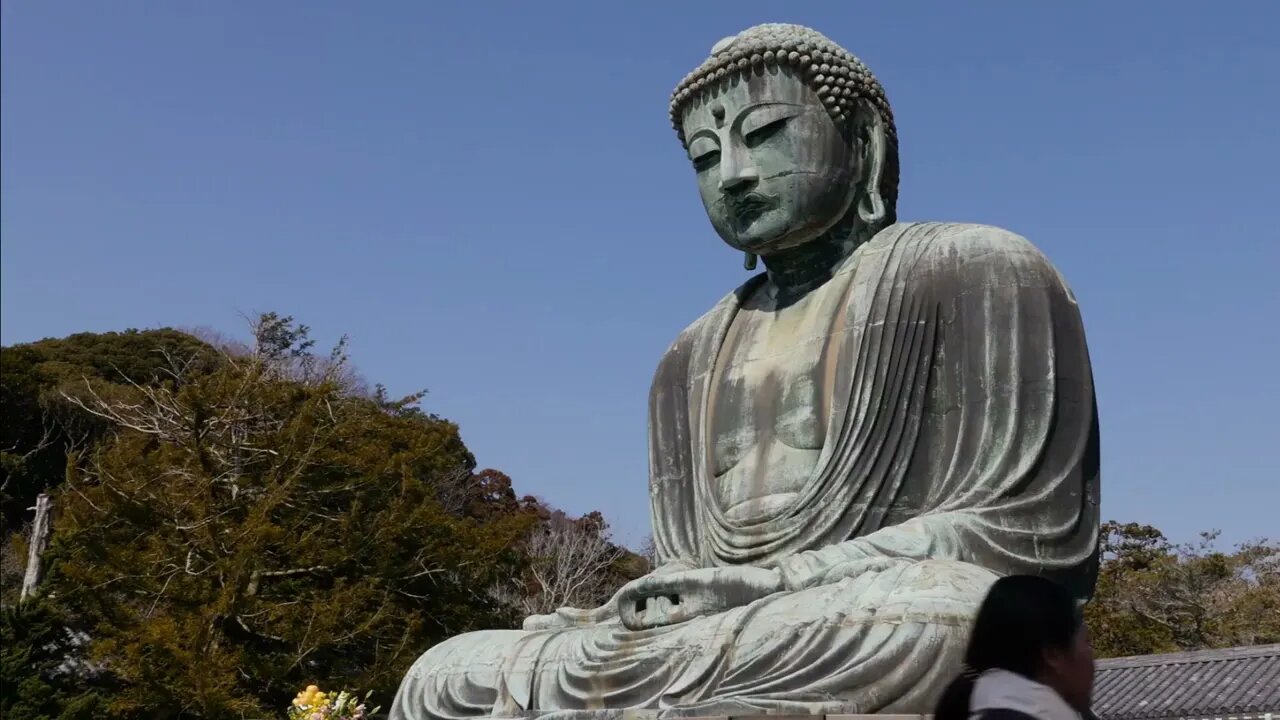Premium Only Content

Kamakura Daibutsu - Kanagawa - Great Buddah
The Kamakura Daibutsu, also known as the Great Buddha of Kamakura, is an immense bronze statue situated in Kamakura, Kanagawa Prefecture, Japan. Constructed in 1252 during the Kamakura period under the sponsorship of regent Hojo Tokiyori, the statue stands at a remarkable height of 13.35 meters (43.8 feet) and weighs an impressive 93 tons.
Originally enshrined within the sacred precincts of Kotokuin Temple, the Kamakura Daibutsu bore witness to Japan's turbulent history. Enduring the ravages of natural calamities, such as typhoons and tsunamis, the temple's structures were repeatedly damaged over the centuries. Eventually, it was decided to leave the awe-inspiring Buddha exposed to the elements, giving it an air of stoic endurance.
As a symbol of veneration towards Emperor Shaka (Emperor Shomu), the statue carries deep religious significance. However, its significance transcends its religious origin, becoming an emblem of Japan's cultural identity and artistic craftsmanship.
Today, the Kamakura Daibutsu continues to attract tourists and pilgrims alike, who are captivated by its serene presence and historical resonance. Restored and preserved diligently over time, the statue serves as a living link to Japan's past, inspiring reflection on the country's enduring legacy of spirituality and resilience.
Standing amidst Kamakura's peaceful surroundings, the Great Buddha remains an enduring symbol of Japan's cultural heritage, drawing visitors from across the globe to experience its profound historical and spiritual aura.
-
 3:59:18
3:59:18
GamerGril
21 hours agoPAGING ALL ZOMBOIZ | DEAD ISLAND 2
188K21 -
 42:24
42:24
MYLUNCHBREAK CHANNEL PAGE
1 day agoA Century Gone
193K134 -
 38:22
38:22
Stephen Gardner
22 hours ago🔥HOLD ON! The RUMORS about Kamala are TRUE...
234K689 -
 1:22:44
1:22:44
Michael Franzese
1 day agoWill Trump’s Win Finally Convince Democrats to Stop The Woke Nonsense??
201K170 -
 8:27:07
8:27:07
MDGgamin
1 day ago🔴LIVE- Rumble Gaming To The MOON - Variety of Games & Chatting - #RumbleTakeover
173K5 -
 27:24
27:24
Mr. Build It
6 days agoDECK DISASTER! How We Fixed a Botched Build
133K18 -
 26:58
26:58
barstoolsports
1 day agoZach Bryan Blocks All of Barstool | Stool Scenes
141K19 -
 1:06:44
1:06:44
Talk Nerdy 2 Us
1 day ago🔥 Hackers vs. The World: From Amazon breaches to FBI-confirmed Chinese telecom spying
126K23 -
 1:24:20
1:24:20
Vigilant News Network
1 day agoJoe Rogan Drops Shocking Election Claim | The Daily Dose
189K220 -
 1:10:18
1:10:18
FamilyFriendlyGaming
1 day ago $19.62 earnedCat Quest III Episode 2
148K1